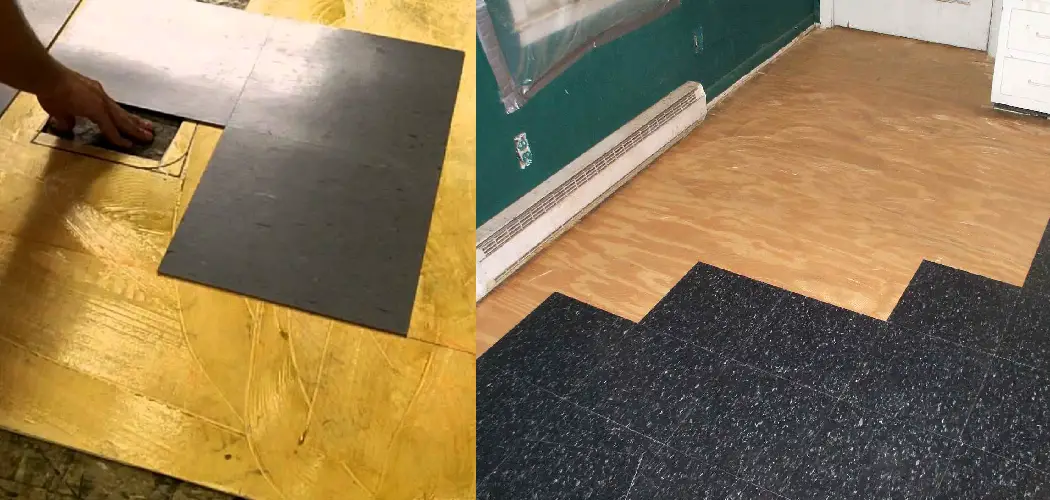If you’re looking to update the flooring in your space, vinyl composition tile (VCT) can be an excellent choice. VCT is a durable and affordable flooring option that offers a wide range of design possibilities. When it comes to installing VCT tile on plywood, proper preparation and installation techniques are crucial to ensure a long-lasting and professional-looking result.
Whether you’re tackling a DIY project or working with a professional, understanding the steps involved in installing VCT tile on plywood is essential. In this article, we will guide you through the process of how to install vct tile on plywood, from preparing the plywood subfloor to properly adhering and finishing the VCT tiles. Get ready to transform your space with a beautiful and resilient flooring solution that will stand the test of time.
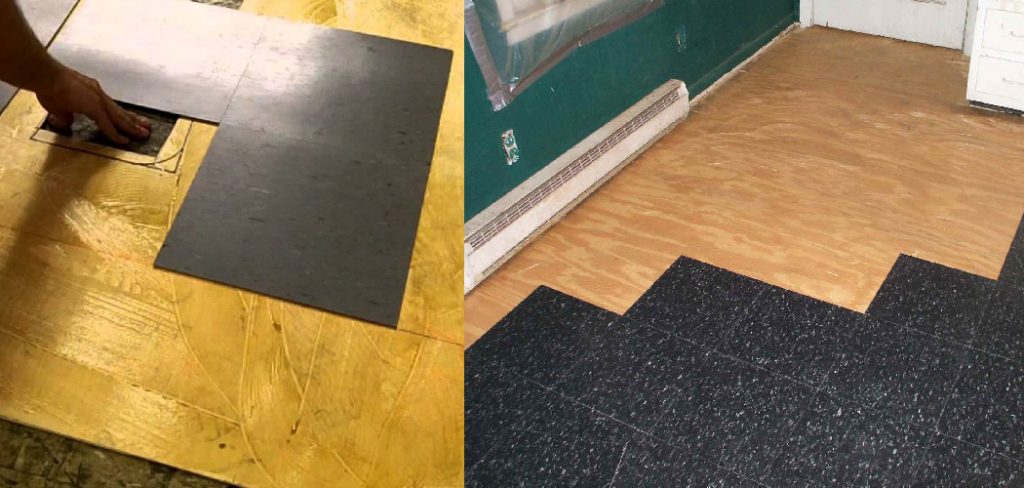
The Appeal of Vct (Vinyl Composition Tile) for Flooring Projects
Vct tile offers a durable, attractive and cost-effective flooring solution for many projects. It is highly resistant to staining, wear and tear, and is available in an array of colors and patterns. Vct tiles are easy to install on plywood surfaces, making them ideal for do-it-yourself projects like basements or bathrooms. Additionally, Vct tiles feature a special coating that makes them slip-resistant and water-resistant.
In addition to their durability and aesthetic appeal, Vct tiles offer another significant benefit: they are very cost effective compared to other types of flooring materials. On average, the cost of installing one square foot with Vct tile runs between $3-$4 dollars, including labor and installation materials. This makes Vct tile a great choice for projects on a budget.
Finally, Vct tiles are relatively low-maintenance. They can be easily cleaned with a vacuum or mop and require only occasional polishing. With proper care and maintenance, Vct tiles will last for many years, making them an excellent option for those looking to create a high-quality floor that will stand the test of time.
In summary, Vct tile offers a great combination of durability, affordability and aesthetic appeal that makes it ideal for many types of flooring projects — especially when installed on plywood surfaces. For those looking to create an attractive floor at an affordable price, Vct tile is worth considering.

Benefits of Installing VCT Tile on Plywood
Installing VCT tile on plywood offers several benefits. One of the most important advantages is that it can be used to create a durable, attractive flooring surface. It is resistant to water damage and wear, so it is ideal for areas such as kitchens and bathrooms that are likely to get wet or experience heavy foot traffic.
Additionally, the installation process is relatively simple and straightforward. With the right tools and materials, anyone with basic DIY skills should be able to install VCT tile on plywood in a few hours.
Another benefit of installing VCT tile on plywood is that it provides sound insulation. The added layer of insulation helps reduce noise transfer between floors, making it perfect for homes with multiple levels or where noise is an issue.
VCT tile also provides a cost-effective solution when compared to other types of flooring. It is generally less expensive than ceramic or stone tiles, and it can be installed by the homeowner instead of hiring a professional.
Finally, installing VCT tile on plywood can help reduce allergens in the home. The tiles are nonporous and do not trap dirt or dust like carpets or rugs do, making them ideal for homes with pets or allergies. Additionally, they require minimal maintenance since spills and messes can be easily wiped away with a damp cloth.
Assessing the Condition of the Plywood Subfloor
Before beginning to install VCT tile on a plywood subfloor, it’s essential to assess the condition of the subfloor. If the plywood is warped or has excess moisture, then installing vinyl composite tile won’t be successful and could lead to long-term damage.
Start by inspecting each sheet of plywood for warping, cracks, and other signs of wear. Look out for any areas that feel soft or spongy when pressed—this indicates too much moisture beneath the surface. It’s also important to look for signs of mold or water damage which can indicate that there may be an issue with leaking somewhere in your home.
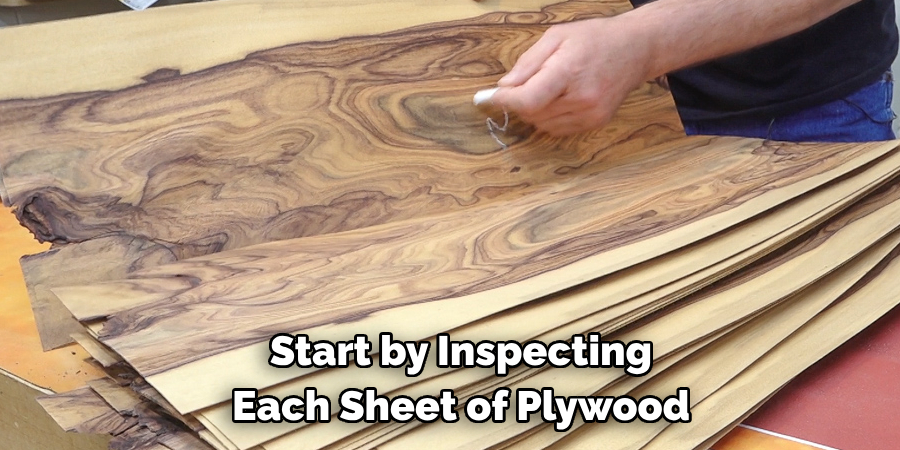
If you find any of these issues during your inspection, you’ll need to address them before you can proceed with installing VCT tile on the plywood.
If the plywood is in good condition, you can begin preparing it for installation by cleaning and sanding the surface. This will help ensure that the adhesive bonds correctly and that your new floor looks great when it’s finished. Be sure to vacuum up any dust after sanding before moving on to applying the adhesive.
10 Methods How to Install VCT Tile on Plywood
1. Prepare the Plywood Subfloor:
Start by ensuring that the plywood subfloor is clean, dry, and level. Remove any debris, dust, or loose particles. Repair any damaged areas or unevenness using wood filler or a leveling compound. Sand down any rough spots and vacuum the subfloor to create a smooth surface.
2. Acclimate the VCT Tiles:
Before installation, allow the VCT tiles to acclimate to the room temperature for at least 24 hours. This helps the tiles adjust and prevents any potential expansion or contraction issues later.
3. Plan the Layout:
Plan the layout of the VCT tiles by measuring the room and determining the center point. Use chalk lines or a straightedge to create reference lines on the subfloor, ensuring that the tiles will be evenly distributed.
4. Apply the Adhesive:
Start in one corner of the room and apply a layer of VCT adhesive to a small section of the subfloor using a notched trowel. Follow the manufacturer’s instructions regarding the recommended adhesive and trowel size. Spread the adhesive evenly to ensure proper tile adhesion.
5. Install the VCT Tiles:
Place the first tile at the intersection of the reference lines and press it firmly into the adhesive. Use a roller or a wooden block to apply even pressure across the tile, ensuring proper adhesion. Continue placing the tiles, aligning them tightly and following the reference lines.
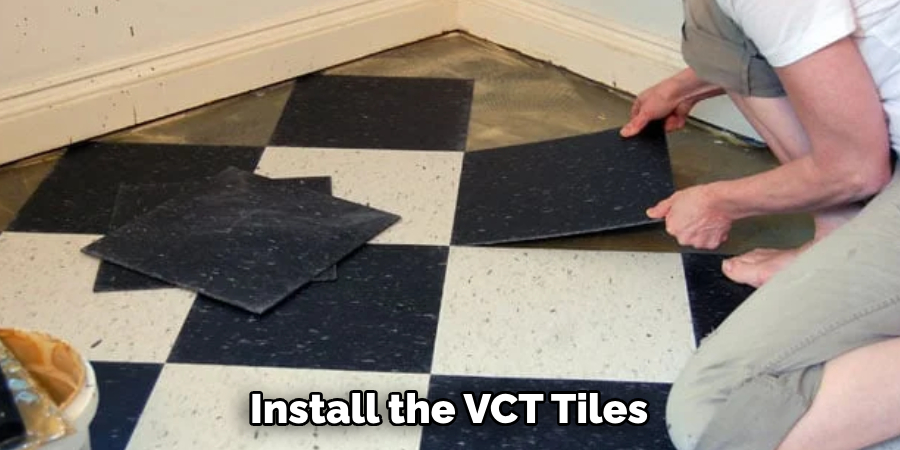
6. Cut Tiles to Fit:
As you reach the edges or encounter obstacles, you may need to cut the VCT tiles to fit. Measure the required dimensions carefully and use a utility knife or VCT tile cutter to make precise cuts. Double-check the fit before applying adhesive and installing the cut tiles.
7. Continue with the Installation:
Work section by section, applying adhesive and installing tiles until the entire floor is covered. Take care to maintain consistent tile spacing and alignment. Use tile spacers if needed to ensure even gaps between the tiles.
8. Allow the Adhesive to Dry:
After installing the VCT tiles, allow the adhesive to dry according to the manufacturer’s instructions. This typically takes 24 to 48 hours. Avoid walking on the tiles during this drying period to prevent any displacement or damage.
9. Apply Floor Finish:
Once the adhesive has dried, apply a floor finish or sealer to protect the VCT tiles and enhance their appearance. Follow the product instructions for proper application and drying times. Apply multiple coats if necessary, allowing each coat to dry before applying the next.
10. Maintain and Clean the VCT Floor:
To keep your VCT floor looking its best, establish a regular cleaning and maintenance routine. Sweep or vacuum the floor regularly to remove dirt and debris. Clean the floor using a neutral pH cleaner and a damp mop, avoiding excessive moisture.
Things to Consider When Installing VCT Tile on Plywood
Before installing VCT tile on plywood, it is important to consider a few factors. First, you should make sure the surface of the plywood is clean and free of dirt, dust, or debris.
You should also make sure that the plywood is level and structurally sound, as uneven surfaces may cause the tiles to shift or crack over time. Additionally, you should check that the plywood is securely fastened to the underlayment before beginning the installation process.
It is also important to choose an appropriate adhesive for your project. You should choose one that is waterproof and designed specifically for VCT tile on plywood surfaces. Additionally, you may need to purchase a primer or sealer to use prior to applying the VCT tiles in order to ensure that everything adheres properly and will not be damaged by water or other elements.
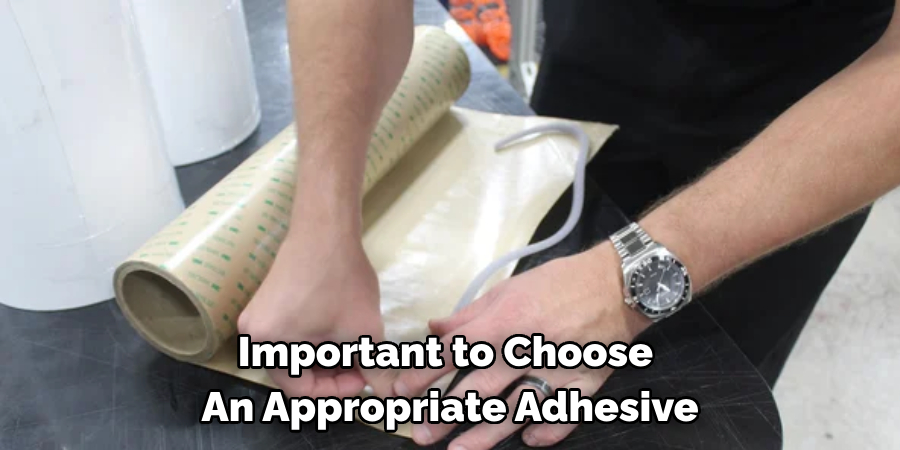
Finally, make sure you have all of the necessary tools and materials prior to starting the installation process. This includes a measuring tape, utility knife, notched trowel, rubber mallet, damp cloths, leveler tool (for grouting), and any other tools needed based on your specific project. Following these tips will help ensure your VCT tile is installed correctly and safely.
Conclusion
Installing VCT tile on plywood can be a relatively simple process if done correctly. Taking the time to plan your project ahead of time and using the best tools and materials available will ensure that your finished product is something you are proud of.
From ensuring that the plywood is secure to double checking that all joints are sealed, there are a few key steps that you must complete to make sure your installation is successful. With a firm understanding of what installation entails, the only thing left is for you to get started!
So get out there, buy the supplies you need, and start laying out the perfect flooring for your space. You’ll be able to enjoy it for years and years while continuing to give off an air of sophistication knowing that you created it with your own hands—all from learning how to install Vct Tile on plywood.

